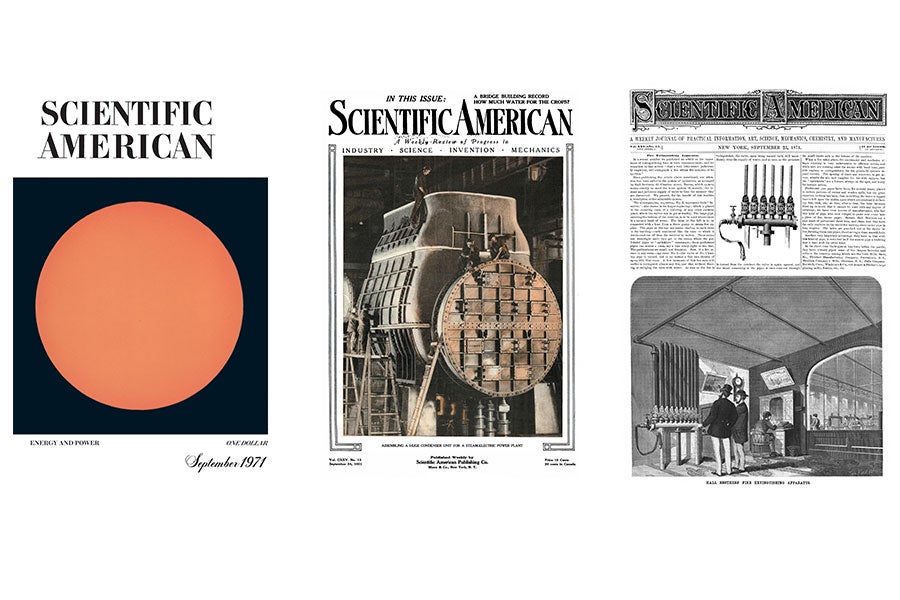1971
A Metric Daydream
“A proposal that the U.S. switch to the metric system has been sent to Congress by Secretary of Commerce Maurice H. Stans. The proposal adopts recommendations made in a National Bureau of Standards report, which describes metrication as ‘a decision whose time has come.’ The U.S. is the only major nation not on the metric system or committed to change to it. ‘A metric America,’ the report says, ‘would seem to be desirable in terms of our stake in world trade.’ If Congress follows the proposal, it will set a target date 10 years ahead. A high priority would be teaching children and the public to think in metric terms. By the target date the U.S. would have become ‘predominantly, though not exclusively, metric.’ Presumably gains and losses in football would still be described in yards, and sayings such as ‘A miss is as good as a mile’ would remain in the language.”
Galactic Radicals
“The same simple molecule that was first discovered in the interstellar reaches of our galaxy eight years ago has been detected within two other galaxies some 10 million light-years away. It is the hydroxyl radical, OH. Radio interferometry shows it is present in M82, an exploding galaxy in the constellation Ursa Major, and in Nee 253, a small spiral galaxy in Sculptor. Evidently hydroxyl radicals number about one to every million hydrogen atoms in the interstellar clouds—about the same proportion as in our galaxy.”
1921
Radio Signals from Mars
“The Martian radio-signal cycle comes around every few years. The newspapers ‘play up’ the announcement that mysterious signals have been intercepted. J. H. C. Macbeth, London manager of the Marconi Wireless Telegraph Company, Ltd., recently stated in a speech that William Marconi was now convinced that he had intercepted signals, reported to have an extremely long wavelength. Somehow it is difficult to believe. Radio communication is such an intricate development that it would be very rare indeed if two peoples, located on different planets, should have worked out precisely the same method of communication. We can more readily believe in the Martians making use of huge mirrors for reflecting light, or even huge searchlights, as a means of attracting our attention.”
Scientific American Goes Monthly
“Announcement: The weekly Scientific American and the Scientific American Monthly are to be combined into a single monthly Scientific American. The first issue will be dated November 1921. The new monthly will have increased reading matter, more illustrations and a broader range of subjects. We confess that after bringing out the Scientific American week by week for over three quarters of a century, we feel a twinge of regret. It is done, however, so we can present the same material in a better balanced and more fully digested form, and at a far lower cost to the reader. The new magazine will embrace all branches of science, research, engineering and industrial advance. The subscription price will be $4.00 a year. The price per copy will be 35 cents.”
1871
Vicious Fish
“Among beings that inhabit the globe’s waters are things beautiful, ludicrous and fearful. The latter class includes the scorpion fish. It inflicts its injuries by its dorsal fin, which is serrated, and until this is broken by a club or stick, no one will venture to touch it with the hand. A fish named ‘candirou’ is said to infest the mouth of the Amazon; although scarcely larger than the minnow, when this little fiend seizes hold of the flesh it holds on with such tenacity that it cannot be removed without tearing out a mouthful of flesh. Another fish of South American rivers is the ‘payara,’ which carries in its lower jaw two fangs, by which it cuts a gash as smoothly as a razor.”


